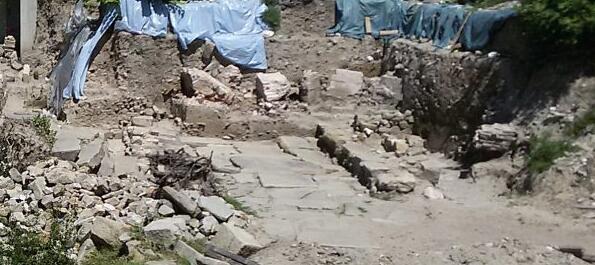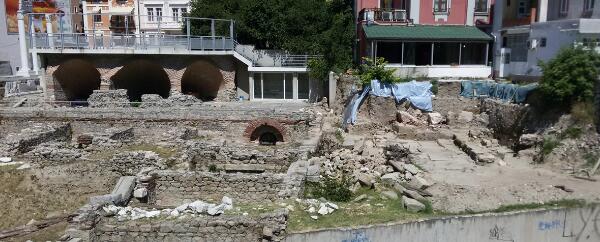Part of important Roma-era street, building façade found at Plovdiv site
Remnants of what was one of the most important streets in Philippopolis, the ancient name of Bulgaria’s second city Plovdiv, have been found by archaeologists examining the eastern part of the former town square, the Agora.

To residents of Philippopolis, the main street would have been known as the Cardo Maximus.
At Plovdiv’s Odeon, archaeologists also have found large remnants of the facade of the building used for local government meetings during the Roman Empire.
Archaeologists already have examined about 10 metres of the paving of the ancient road, local media reported on August 13, and were surprised when they found large fragments of the Odeon’s facade.
Archaeologist Maya Martinova-Kyutova said that this was actually the main fa?ade of the Odeon, a place where there were probably three to four entrances. She said that the facade had a monumental shape, probably with a portico, because the dig team had found fragments of columns and other characteristic architectual elements.
The building had remained extant for a long time, until the Middle Ages, when it was destroyed, most probably by an earthquake.
The archaeologists also have discovered a valuable fragment of a marble statue of a prominent citizen of Philippopolis.

From a piece of text, the archaeologists understood that the citizen had a rare privilege, the right to be in the front row of the theatre.
Such an exclusive right was given as a sign of respect only to the most revered citizens of Philippopolis.
The text mentions a very rare name, Sozipatar, which the archaeologists have not encountered before on any monument in Plovdiv.
The archaeological examination is part of a wider project to link the Odeon site to the nearby early Christian Episcopal Basilica site, just a few metres away.

